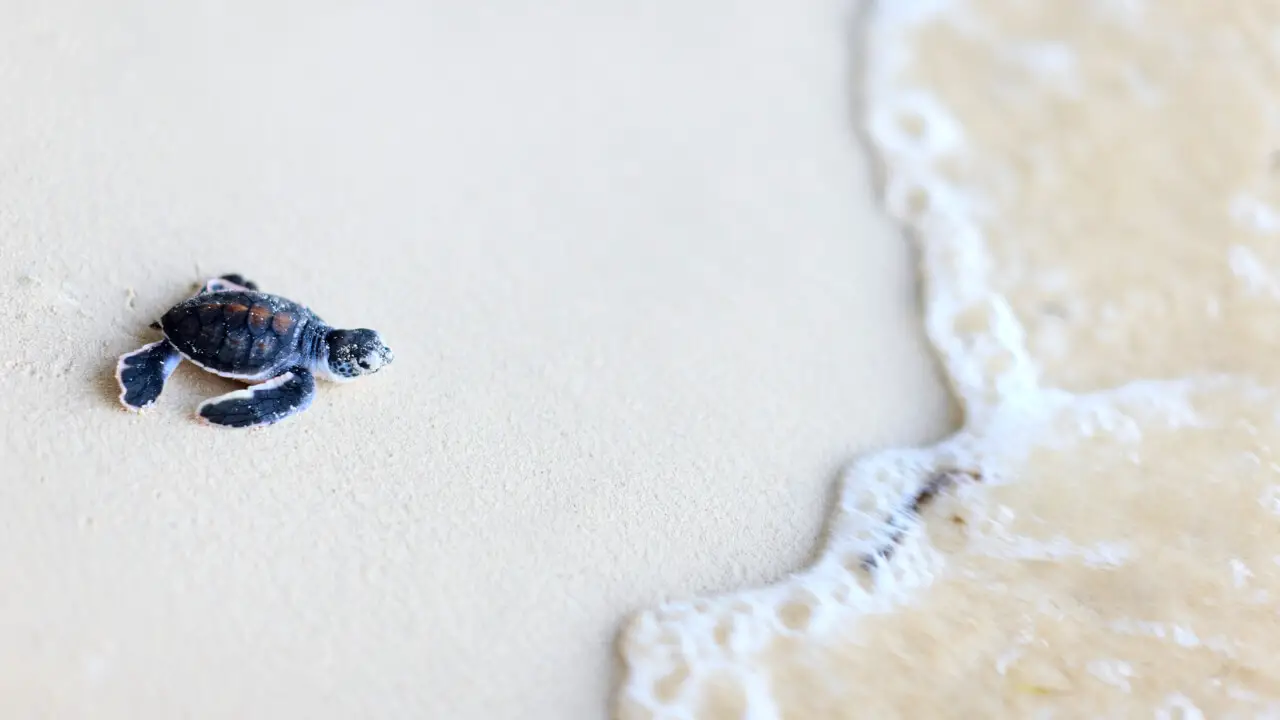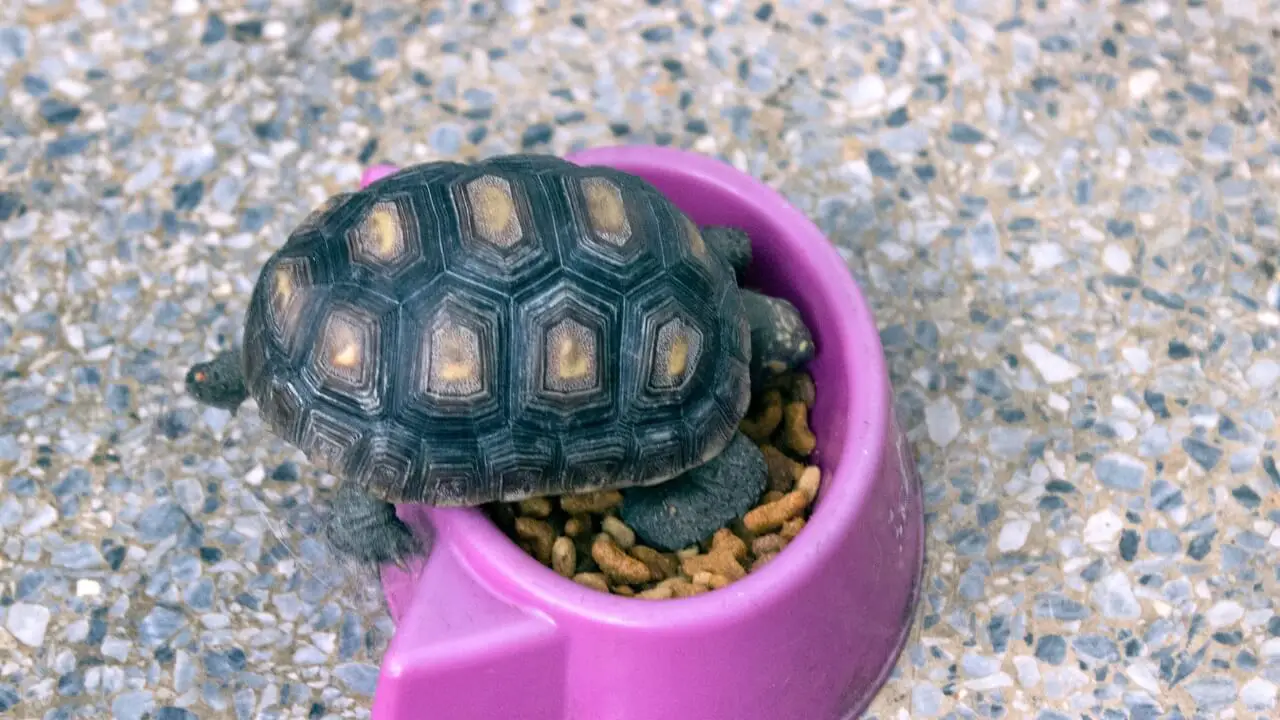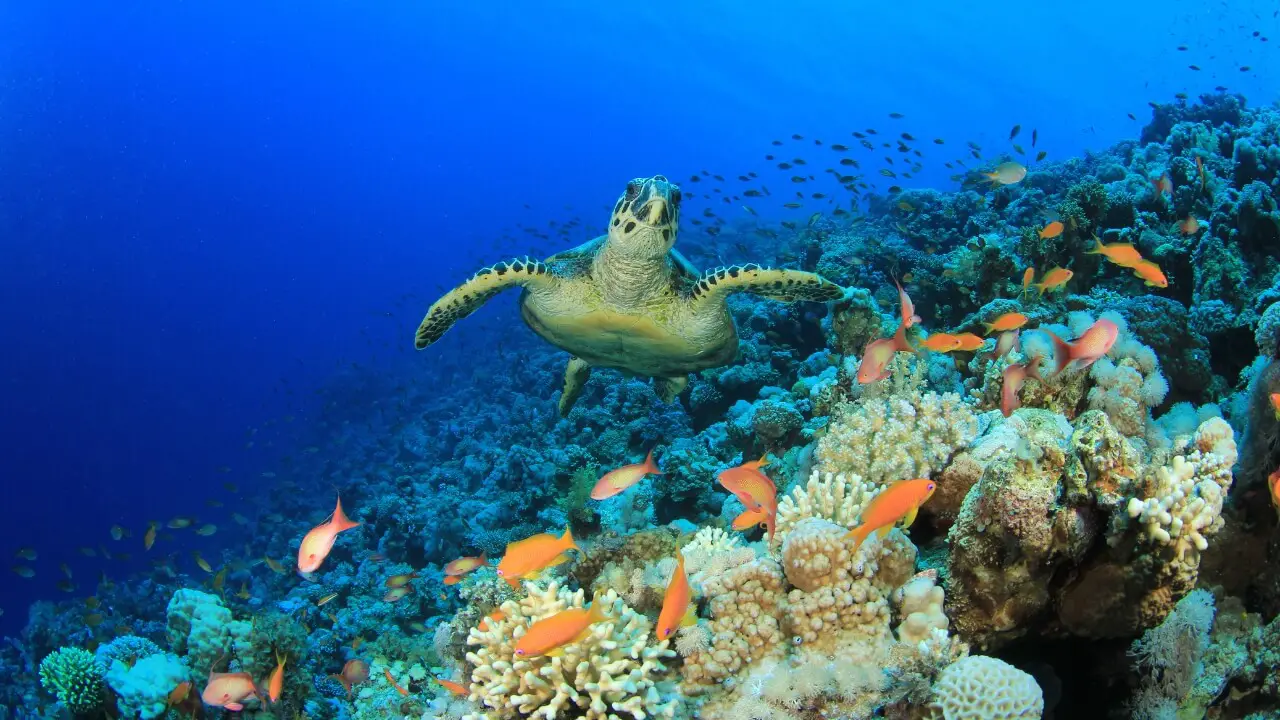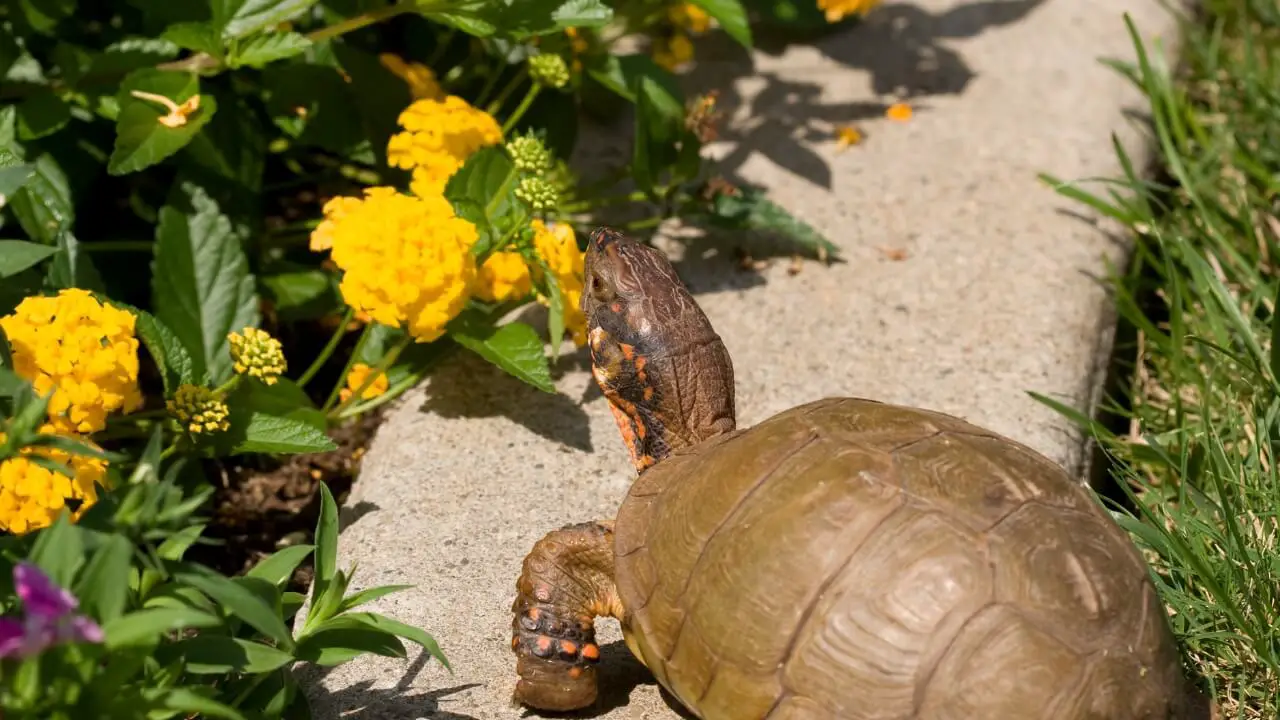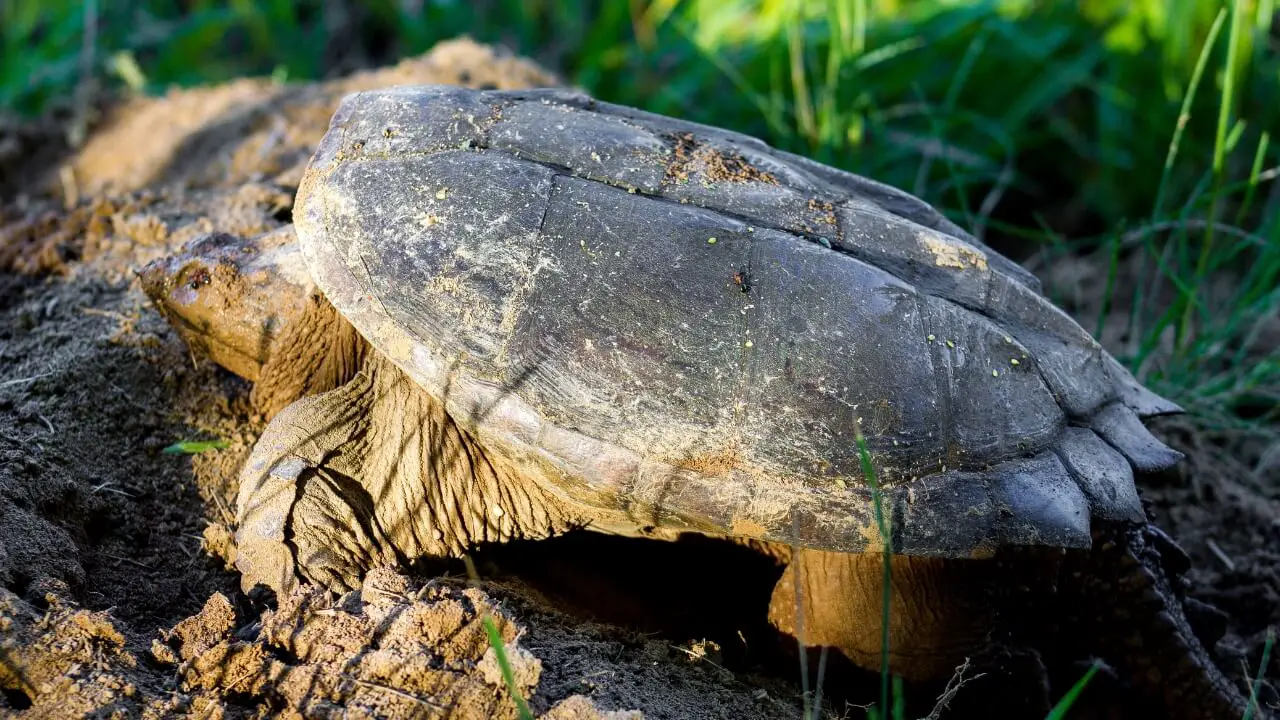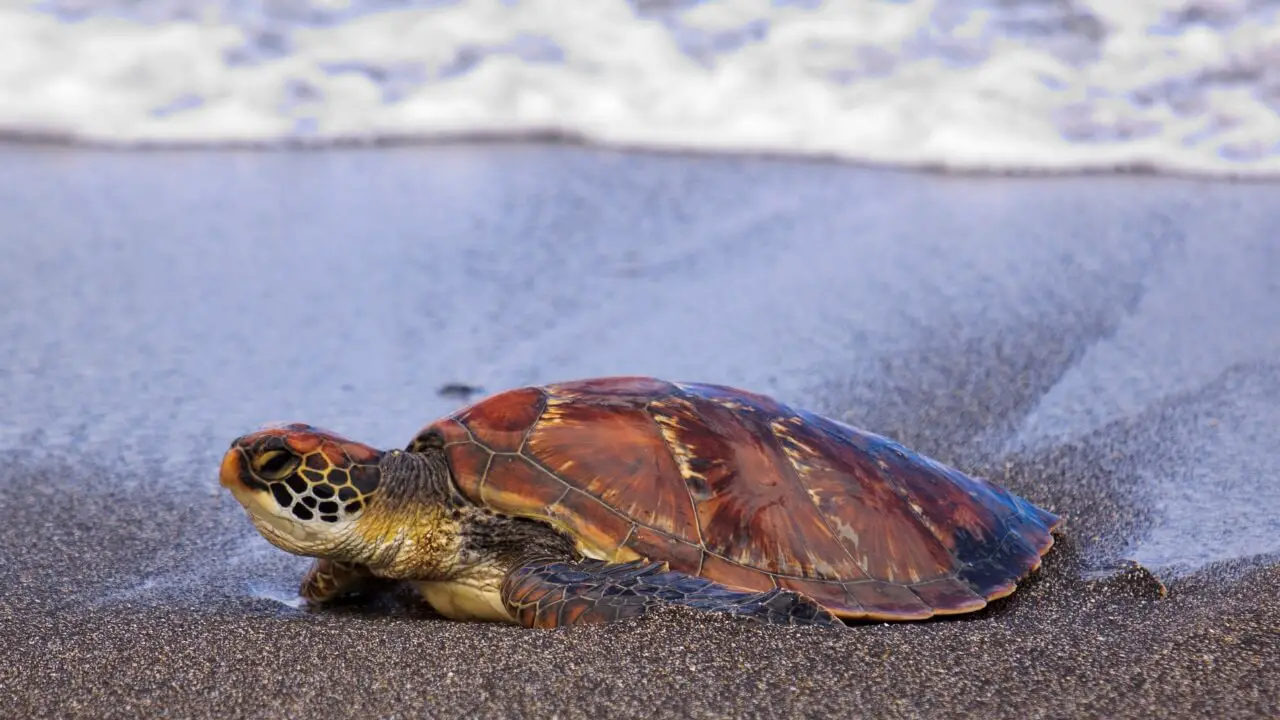Turtles are reptiles with a special feature of having a protective shell over their body that develops from their ribs. Except for Antarctica, turtles are found in all continents as well as in freshwater and seawater. Most turtle species are omnivores, which means they eat both plants and animals.
However, their diet depends on their species, habitat, and sometimes on their age. Here we gathered information about what turtles eat, how they eat, and what sea turtles and some other types of turtles eat.
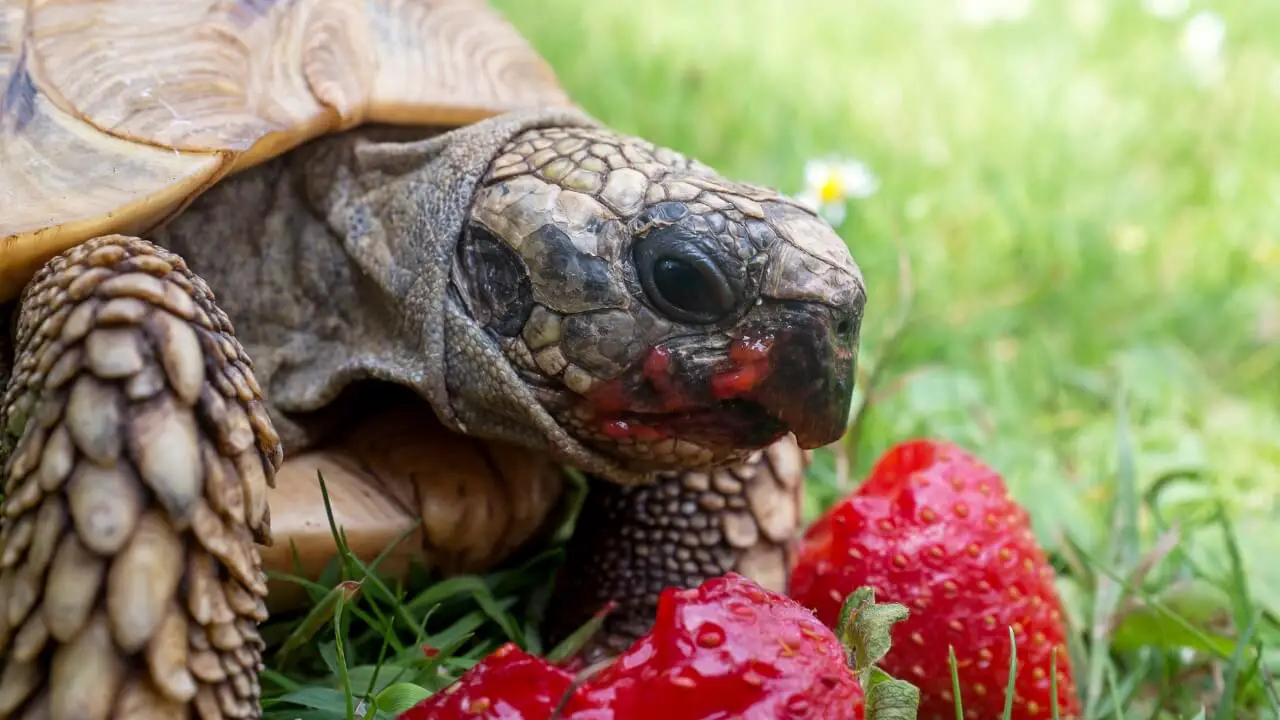
What Do Turtles Eat?
Most species of turtles are opportunistic omnivores, however, their diet depends on their species as well as the habitat and the season of the year. For example, aquatic species consume a more carnivorous (animal-based) diet while land-dwelling species consume a more herbivorous (plant-based) diet. As turtles are slow animals with no agility, they usually eat plant materials or animals with limited movements, such as mollusks, insect larvae, and worms.
As turtles are opportunistic omnivores, they eat aquatic vegetation like algae, seaweed, and water hyacinths. In animals, they eat insects (caterpillars, crickets, and insect larvae), small fish, snails and other mollusks, frogs, tadpoles, other amphibians, reptiles (including other turtles), birds, and even mammals. Turtles also consume carrion when available. Many turtle species are known to eat eggshells, animal bones, hair, and droppings to supplement their diet with extra nutrients.
The diet of an individual turtle within a species may also change with sex, age, and season of the year. Different populations of the same species may also consume different diets. The larger female individuals of Barbour’s map turtle usually consume mollusks while the male mainly consume arthropods.
Juvenile individuals in many species are typically carnivorous but switch to a more herbivorous diet as they become adults. The European pond turtle has been observed to consume a more carnivorous diet much of the year but switch to water lilies during the summer season.
In captivity, turtles are mostly fed with a commercial diet.
However, they are also offered animal products (boiled eggs, snails, crickets, mealworms, earthworms), fresh vegetables (carrots, lettuce, kale, mustard greens, peas, beans, corn), and fresh fruits (apple, banana, kiwi, grapes, strawberries, and mangos).
What do Turtle Hatchlings Eat? – What do Baby Turtles Eat?
Baby turtles, much like their adult counterparts, are omnivorous and feed on a variety of foods. They typically consume insects such as crickets or mealworms, aquatic plants like algae and duckweed, small fish or shrimp if available in the area they live in. It is important to provide them with a balanced diet that includes both plant-based food sources and animal protein sources to ensure optimal health for your baby turtle.
How Do Turtles eat?
Turtles simply eat their food by using their beaks to tear off pieces of food. They do not chew food and swallow the pieces as a whole. Their long flexible necks help them to reach into small fissures for food as well as to pull out large food items from the water.
Turtles lack teeth and have keratinous sheets with sharp edges on their both upper and lower jaws. These sheets act like a pair of false teeth and allow them to quickly kill small prey as well as to cut pieces of meat from carcasses. They also use it to chop vegetation into bite-size pieces. Turtle species that eat mollusks crush it with a thick and wide sheet inside their mouth.
Some turtle species use unique feeding methods of eating their food. For example; the painted turtle and the yellow-spotted river turtle are filter feeders. They skim the water with their open mouth and throat to get food particles. They then close their mouth and constrict their throat to push out water through their nostrils and the space in between their jaws while retaining the food particles. Some turtle species also use the “gape-and-suck technique”, in which they open their jaws and widely expand their throat and suck the prey in.
Turtles usually ambush their prey (insects, fish, frogs, etc) but are also scavengers and eat carcasses. The alligator-snapping turtles are known to have a worm-like projection on their tongue to attract fish into their mouth.
What Do Sea Turtles Eat?
Sea turtles are omnivores and eat a large variety of items. They eat sea grasses, algae, seaweeds, jellyfish, crabs, shrimps, mollusks, fish eggs, fish, and other small marine organisms. They also scavenge on carcasses along the shorelines and in the ocean depths.
The diet of sea turtles mostly depends on their species, age, and habitat. For example; juvenile individuals of green sea turtles are omnivorous, however, as they grow mature they switch to an exclusive herbivorous diet. On the other hand, the loggerhead, olive ridley, Kemp’s ridley, and hawksbill sea turtle species consume an omnivorous diet throughout their lifetime.
They consume a wide variety of plants and animals, including seagrasses, seaweeds, decapods, mollusks, Echinoderms, sponges, cnidarians, worms, and fish. Some species consume specialized diets of only certain prey. For example, leatherback sea turtles eat only jellyfish, and hawksbill sea turtles primarily eat sponges.
What Do Box Turtles Eat?
Box turtles are opportunistic omnivores and eat anything they can catch. They eat a wide variety of plants and animals. They primarily eat invertebrates (insects, earthworms, slugs, snails, millipedes), however, they also consume a large amount of vegetation that ranges from 30 to 90% of their diet. They will also feed on carrion if available in their surroundings.
What Do Snapping Turtles Eat?
Snapping turtles consume an omnivorous diet, which means it consists of both plants and animals. Their diet depends on their species and habitat. However, they mainly eat aquatic vegetation like algae, moss, pondweeds, and duckweeds.
In animals, they eat invertebrates (insects, worms, crayfish, and others), fish (minnows, eels), small turtles, frogs, birds (ducklings, goslings, mallards, and other aquatic birds), and small mammals (muskrats, squirrels, mice, opossum, etc). They also scavenge on dead animal matter. Some species like alligator snapping turtles are known to eat a more carnivorous diet.
What Do Painted Turtles Eat?
Painted turtles are omnivores and consume both plants and animals. They eat aquatic vegetation like algae, duckweed, and pondweeds; insects like beetles, crickets, and dragonflies; small fish, tadpoles, worms, snails, and crustaceans (crayfish and shrimps). Juvenile painted turtles consume a more carnivorous diet and then shift to a more herbivorous diet as they mature.
What Do Hawksbill Turtles Eat?
Hawksbill turtles are omnivores and eat plants and animals. However, they are primarily spongivores. Sea sponges make up 70 to 95% of their diet. Like other sponge-eating animals, Hawksbill turtles are also choosy. They only eat selected sponge species and ignore many others.
The Caribbean populations primarily consume sponges of the orders Astrophorida, Spirophorida, and Hadromerida. Besides sponges, Hawksbill turtles also eat algae, marine plants, cnidarians, jellyfish (including comb jellies), mollusks, sea anemones, crustaceans, and fish.
Hawksbill turtles also eat dangerous jellyfish-like hydrozoans, and Portuguese man o’ war. They close their unprotected eyes when eating these organisms. Armored structures on their heads provide them protection against the stinging cells of man o’ war. Hawksbill turtles are also highly resistant and tolerant to their prey.
They eat some sponges that are extremely toxic to other organisms, such as Aaptos aaptos, Chondrilla nucula, Spheciospongia vesparium, Suberites domuncula, and Tethya actinia.
What Do Leatherback Turtles Eat?
Adult leatherback sea turtles exclusively eat jellyfish. They help to control the populations of jellyfish because of their obligate-eating nature.
Besides jellyfish, they also eat other soft-bodied animals like other members of the Phylum Cnidaria (siphonophores), tunicates (pyrosome and salps), and cephalopods (squids, octopus, and cuttlefish). Leatherback turtles are also believed to eat small crustaceans, fish (possibly those that have symbiotic relationships with jellies), snails, and sea urchins.
What Do Mekong Snail-Eating Turtles Eat?
Mekong snail-eating turtles primarily eat snails and other mollusks. They will also consume a variety of other aquatic animals, such as shrimps, crabs, aquatic insects, fish eggs, and small fish.
The Mekong snail-eating turtle is an important species in its native habitat where it controls the populations of certain types of freshwater clams that can otherwise destroy the local ecosystem.


